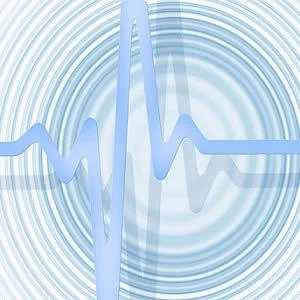The incidence of previously undiagnosed atrial fibrillation (AF) may be substantial in patients with risk factors for AF and stroke, according to a study presented at the European Society of Cardiology Congress 2017. By using implanted cardiac monitors, researchers detected nearly 30 percent of previously undiagnosed AF after 18 months in this high-risk group of patients.
You might also like: Long Working Hours and Increased AFib Risk
Atrial fibrillation affects millions of people worldwide and increases with older age, hypertension, diabetes, and heart failure, conditions that are associated with increased stroke risk. AF episodes may be symptomatic, asymptomatic (i.e., silent AF), or both. Recognition of previously undiagnosed AF and initiation of appropriate therapies is essential for stroke prevention.
Minimally invasive prolonged electrocardiographic monitoring with small, insertable cardiac monitors (ICMs) placed under the skin could assist with early AF diagnosis and earlier treatment. The same kind of cardiac monitors were used in the present study conducted by James A. Reiffel, MD, of the Columbia University College of Physicians and Surgeons, New York, and colleagues. A total of 385 patients at high risk of both AF and stroke, received an insertable cardiac monitor. Approximately 90 percent of patients had nonspecific symptoms potentially compatible with AF, such as fatigue, breathing difficulties, and/or palpitations, and had either three or more of heart failure, hypertension, age 75 or older, diabetes, prior stroke or transient ischemic attack (TIA), or two of the former plus at least one of the following additional AF risk factors: coronary artery disease, renal impairment, sleep apnoea, or chronic obstructive pulmonary disease.
Patients were monitored for a mean (SD) period of 22.5 (7.7) months. The detection rate of AF lasting six or more minutes at 18 months was 29 percent. Detection rates at 30 days and 6, 12, 24, and 30 months were 6 percent, 20 percent, 27 percent, 34 percent, and 40 percent, respectively. Median time from device insertion to first AF episode detection was 123 days. Of patients with AF lasting six or more minutes at 18 months, 10 percent had one or more episodes lasting 24 hours or longer, and oral anticoagulation therapy was prescribed for 72 patients (56 percent).
Dr. Reiffel et al. note that as the AF incidence was still rising at 30 months, the ideal monitoring duration is unclear. "Further trials regarding the value of detecting subclinical AF and of prophylactic therapies are warranted."
The findings are published in JAMA Cardiology. The authors cite some limitations of their study, including its modest size.
Source: JAMA
Image Credit: Pixabay
References:
Reiffel, James A. et al. (2017) Incidence of Previously Undiagnosed Atrial Fibrillation Using Insertable Cardiac Monitors in a High-Risk PopulationThe REVEAL AF Study. JAMA Cardiology. doi:10.1001/jamacardio.2017.3180
Latest Articles
Stroke, atrial fibrillation, #ESC17, High-risk Patients
The incidence of previously undiagnosed atrial fibrillation (AF) may be substantial in patients with risk factors for AF and stroke, according to a study presented at the European Society of Cardiology Congress 2017










